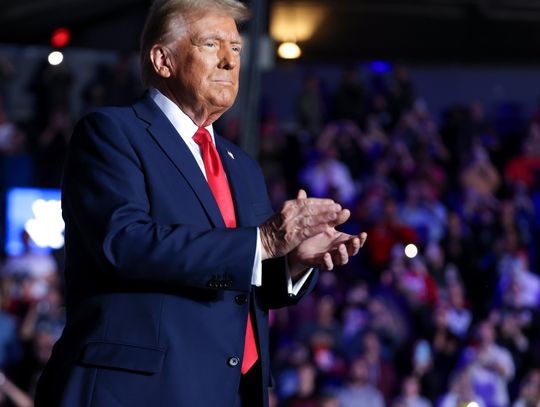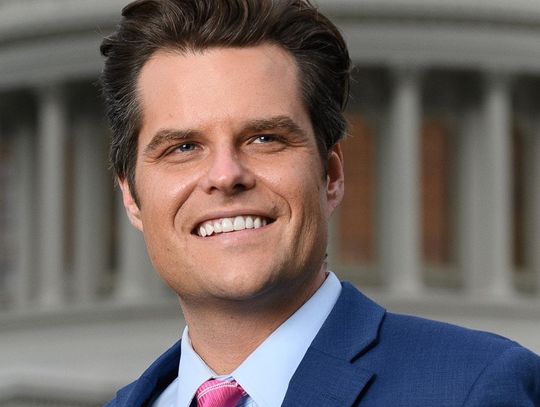Biden przewodzi powołaniu „Partners in the Blue Pacific”
24 czerwca 2022 roku w życie wprowadzona została nowa inicjatywa, której celem jest odpowiedź państw Wolnego Świata na rosnącą ingerencję Chińskiej Republiki Ludowej w regionie wysp na Pacyfiku. Chiny, próbując przesuwać granicę swoich wpływów coraz dalej, chcą nie tylko zacieśnić współpracę ekonomiczną i obronną z małymi państwami wyspiarskimi na Pacyfiku, ale przede wszystkim wydrzeć je spod pieczy Stanów Zjednoczonych. W skład liderów nowo powstałej koalicji, której przewodzi prezydent Joe Biden, wchodzą: Stany Zjednoczone, Australia, Japonia, Nowa Zelandia oraz Wielka Brytania.
Prezydent USA w czasie swoich ostatnich spotkań na szczeblu międzynarodowym sporo czasu poświęcił na budowę relacji z przedstawicielami państw sojuszniczych na Indo-Pacyfiku. Joe Biden odwiedził Azję po raz pierwszy jako prezydent pod koniec maja tego roku, aby zacieśnić relacje z Koreą Południową w czasie wizyty w Seulu oraz dwa dni później na szczycie QUAD w Tokio. Warto odnotować także, że 31 maja 2022 w Białym Domu gościła premier Nowej Zelandii Jacinda Ardern.
Administracja prezydenta poświęca dużo czasu wątkowi budowy relacji z sojusznikami na Pacyfiku oraz zarządzania stosunkami z Chińską Republiką Ludową. Dowodem na to jest obecność sekretarza obrony USA Lloyda Austina na Szczycie Bezpieczeństwa Azji Shangri-La w Singapurze. 11 czerwca Austin spotkał się tam nie tylko ze swoimi odpowiednikami z Australii i Japonii, ale dzień wcześniej odbył pierwsze spotkanie ze swoim chińskim odpowiednikiem Wei Fenghe. Dyplomatyczna burzliwość wypowiedzi przedstawiciela Chin utwierdziła Amerykanów w przekonaniu, iż Chińska Republika Ludowa nie jest nastawiona na utrzymanie statusu quo w regionie, toteż administracja Joe Bidena, w porozumieniu z sojusznikami, postanowiła powołać kolejną inicjatywę dążącą do stawienia czoła chińskiej ekspansji.
Wydane na stronie Białego Domu oświadczenie w tej sprawie wskazuje, że planują wykorzystać swój potencjał w celu zapewnienia „dobrobytu, odporności i bezpieczeństwa na Pacyfiku”. Środkiem do osiągnięcia wymierzonego celu jest współpraca z państwami, które narażone są bezpośrednio na rosnące aspiracje terytorialne, ekonomiczne i militarne Chińskiej Republiki Ludowej. Mowa tutaj m.in. o Fidżi, Mikronezji czy Tonga.
W oficjalnej informacji medialnej administracji Joe Bidena czytamy o trzech polach współpracy, na których skupiać się będzie inicjatywa „Partners in the Blue Pacific”:
- Skuteczność i wydajność na Indo-Pacyfiku
Postulaty pięciu państw oparte mają być na nadchodzącej strategii Forum Wysp Pacyfiku 2050 dla Błękitnego Pacyfiku.
- Wzmocnienie regionalizmu
PBP nawiąże bliższe kontakty z rządami państw wyspiarskich na Pacyfiku oraz z Forum Wysp Pacyfiku, ułatwiając silniejsze i bardziej regularne zaangażowanie w ramach współpracy z państwami powołującymi nową inicjatywę w regionie.
- Rozszerzenie możliwości współpracy między Pacyfikiem a światem
PBP będzie zachęcać i ułatwiać większe zaangażowanie w Pacyfiku przez każdego innego partnera, który podziela wartości Pacyfiku i ma na celu konstruktywną i przejrzystą pracę na rzecz mieszkańców regionu.
Budowanie coraz dalej idących sojuszy i współprac dążących do wsparcia wysp w regionie Indo-Pacyfiku jest dla Stanów Zjednoczonych kolejnym krokiem w odpowiedzi na rosnącą inicjatywę Chin. Administracja Joe Bidena oraz kraje Wolnego Świata dostrzegają zagrożenie idące wraz z postępującymi dążeniami ChRL. Działania na Wschodzie nie są jedynym narzędziem USA w budowaniu oporu, również na szczycie NATO w Madrycie, który odbył się w dniach 28-30 czerwca 2022 r. pierwszy raz w historii podniesiony został wątek zagrożenia Chińskiego. Na spotkanie liderów Sojuszu Północnoatlantyckiego przybyli również przedstawiciele partnerów z regionu Pacyfiku. Mowa o czołowych politykach Australii, Nowej Zelandii, Japonii i Korei Południowej.
W czasie, gdy nagłówki mediów dominuje tematyka związana z agresją Rosji na Ukrainę, administracja Joe Bidena wraz z czołowymi liderami państw regionu Pacyfiku i świata udowadnia, że nie traci z linii wzroku największego zagrożenia, które dostrzegają w postaci totalitarnych działań, rozbudowy Chińskiej Armii Ludowo-Wyzwoleńczej, ekspansji ekonomicznej i terytorialnej Chin. Częściowa neutralizacja Chin oznacza bowiem również pośrednie osłabienie reżimu Władimira Putina, który pozostaje w nieustannej komitywie z Xi Jinpingiem.
Jan Hernik
absolwent Ośrodka Studiów Amerykańskich Uniwersytetu Warszawskiego. Specjalizuje się w teorii wpływu religii, rasy i pochodzenia etnicznego na wybór polityczny w amerykańskich wyborach prezydenckich. Jego zainteresowania badawcze obejmują także aktywność USA w regionie Indo-Pacyfiku.
Niniejszy artykuł powstał w ramach działalności społeczno-misyjnej polskiego think tanku Warsaw Institute. Jeśli cenicie Państwo przygotowane przez naszych ekspertów treści, apelujemy o wsparcie finansowe naszej działalności realizowanej na zasadzie non-profit. Do regularnych darczyńców przysyłamy bezpłatnie anglojęzyczny kwartalnik The Warsaw Institute Review.Więcej informacji: www.warsawinstitute.org/support/Darowizny można dokonać bezpośrednio na konta bankowe:USD: PL 82 1020 4900 0000 8502 3060 4017EUR: PL 85 1020 4900 0000 8902 3063 7814GBP: PL 18 1020 4900 0000 8302 3069 6641PLN : PL 41 1020 1097 0000 7202 0268 6152SWIFT: BPKOPLPWDziękujemy!
Warsaw Institute to polski think tank zajmujący się geopolityką. Główne obszary badawcze to stosunki międzynarodowe, bezpieczeństwo energetyczne oraz obronność. Warsaw Institute wspiera Inicjatywę Trójmorza oraz stosunki transatlantyckie.
Warsaw Institute is a Polish think tank focusing on geopolitics. The main research areas are international relations, energy security and defense. The Warsaw Institute supports the Three Seas Initiative and transatlantic relations.
The United States accepts China’s challenge. Biden leads the establishment of “Partners in the Blue Pacific”
On June 24, 2022, a new initiative was launched to respond to the growing interference of the People’s Republic of China in the Pacific island region. China, trying to move the boundary of its influence further and further, wants not only to tighten economic and defense cooperation with small island states in the Pacific, but above all to tear them away from the protection of the United States. The leaders of the newly formed coalition, led by President Joe Biden, include the United States, Australia, Japan, New Zealand and the United Kingdom.
During his recent meetings at the international level, the US President devoted a lot of time to building relations with representatives of allied countries in the Indo-Pacific. Joe Biden visited Asia for the first time as president in late May this year to strengthen ties with South Korea during his visit to Seoul and two days later at the QUAD summit in Tokyo. It is also worth noting that on May 31, 2022, the Prime Minister of New Zealand, Jacinda Ardern, visited the White House.
The president’s administration spends a lot of time building relations with allies in the Pacific and managing relations with the People’s Republic of China. This is evidenced by the presence of US Secretary of Defense Lloyd Austin at the Shangri-La Asia Security Summit in Singapore. On June 11, Austin not only met with his Australian and Japanese counterparts there, but the day before he had his first meeting with his Chinese counterpart Wei Fenghe. The diplomatic turbulence of the statements by the Chinese representative confirmed the Americans in the belief that the People’s Republic of China is not focused on maintaining the status quo in the region, so the Joe Biden administration, in agreement with its allies, decided to launch another initiative aimed at facing Chinese expansion.
A statement released on the White House website indicates that they plan to use their potential to ensure “prosperity, resilience and security in the Pacific.” The means to achieve the set goal is cooperation with countries that are directly exposed to the growing territorial, economic and military aspirations of the People’s Republic of China. Mention is made here, inter alia, of about Fiji, Micronesia or Tonga.
In the official media information of the Joe Biden administration, we read about three areas of cooperation on which the Partners in the Blue Pacific initiative will focus:
- Efficiency and performance in the Indo-Pacific
The demands of the five countries are to be based on the upcoming 2050 Pacific Islands Forum strategy for the Blue Pacific.
- Strengthening regionalism
The PBP will develop closer contacts with Pacific Island State Governments and the Pacific Islands Forum, facilitating stronger and more regular engagement with countries launching a new initiative in the region.
- Expanding opportunities for cooperation between the Pacific and the world
PBP will encourage and facilitate greater involvement in the Pacific through any other partner who shares the Pacific’s values and aims to work constructively and transparently for the benefit of the people of the region.
Building ever-wider alliances and collaborations to support the islands in the Indo-Pacific region is another step for the United States to respond to a growing Chinese initiative. Joe Biden’s administration and the countries of the Free World see the threat that goes along with the progressive aspirations of the PRC. Actions in the East are not the only tool of the US in building resistance, also at the NATO summit in Madrid, which took place on June 28-30, 2022, the topic of the Chinese threat was raised for the first time in history. Representatives of partners from the Pacific region also attended the meeting of the leaders of the North Atlantic Alliance. We are talking about leading politicians from Australia, New Zealand, Japan and South Korea.
At a time when media headlines are dominated by topics related to Russia’s aggression against Ukraine, the administration of Joe Biden, together with the leading leaders of the countries of the Pacific region and the world, is proving that it is not losing sight of the greatest threat, which they see in the form of totalitarian actions, the expansion of the Chinese People’s Army Liberation, economic and territorial expansion of China. The partial neutralization of China also means an indirect weakening of the regime of Vladimir Putin, which remains in constant agreement with Xi Jinping.
Jan Hernik is a graduate of the American Studies Center at the University of Warsaw. He specializes in the theory of religion, race and ethnicity for political choice in the U.S presidential elections. His research interests also include US activity in the Indo-Pacific region.










